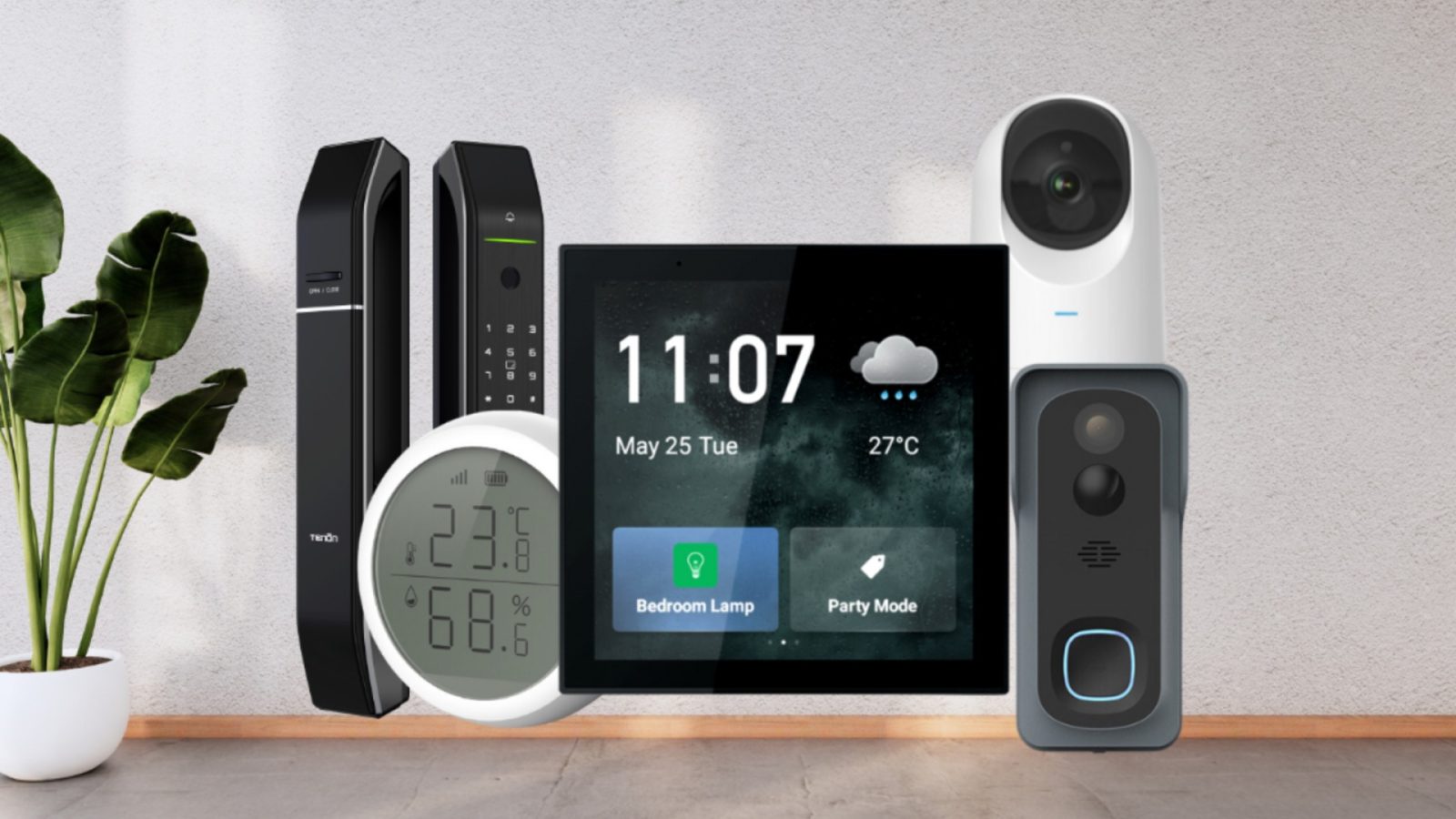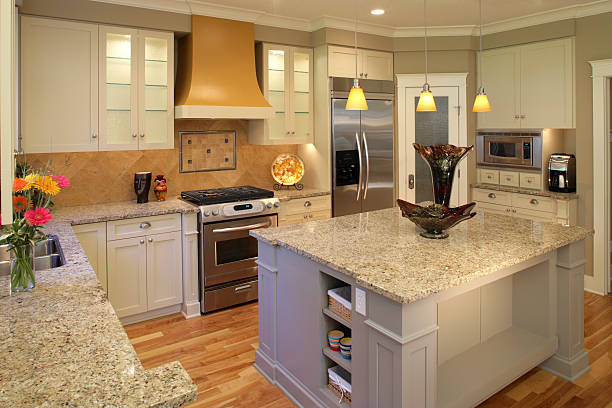Your home should feel safe, calm, and effortless. Today’s smart devices finally deliver that promise. They learn your routines, adapt to your habits, and respond faster than you can reach a switch. Moreover, new standards make gear play nicely together. In addition, local processing keeps data closer to home and more private.
Crucially, this guide rounds up the best smart home devices 2025 and explains how they protect you. You will see where learning helps in real life. For example, lights deter intruders while locks secure the door you forgot. Meanwhile, thermostats cut wasted energy without extra taps. Finally, you’ll find step-by-step setup tips, clear compatibility notes, and honest caveats.
How Smart Devices Learn Your Behavior
Smart devices learn patterns without demanding your attention. Presence sensing detects when you are home. Then, geofencing uses your phone’s location to trigger routines. For example, lights can switch on as you approach. Similarly, locks can secure automatically after everyone leaves.
However, safety starts with where data lives. Local processing keeps footage, commands, and routines inside your home. Therefore, your camera can recognize people without cloud uploads.
Moreover, smart locks can verify access codes offline, so your home will still work during internet outages. Standards matter as well. Matter and Thread reduce pairing headaches. In addition, they help bulbs, plugs, and sensors talk reliably. Consequently, your routines break less often. Finally, you can switch platforms later without replacing everything.
Anomaly detection is the next leap. Cameras learn normal motion in your yard. Meanwhile, leak sensors track expected humidity. Therefore, they flag unusual events, not everyday life. You get fewer false alerts. You also respond faster when something is actually wrong.
Editor’s Picks: The Best Smart Home Devices 2025
Choosing is overwhelming. Therefore, start with cross-category winners that improve safety and comfort at once. The following “no-brainer” picks fit most homes. Each balances reliability, privacy, and easy setup. These examples also play well with major voice assistants and Matter.
- Smart Video Doorbell (Mid)
Learns frequent visitors and package patterns. Moreover, it supports local recording and battery or wired power. In addition, activity zones reduce false alerts from the street. - Smart Lock with Auto-Lock + Temporary Codes (Mid)
Generates guest codes that expire. Meanwhile, it auto-locks after a delay or when everyone leaves. Therefore, you protect doors without thinking. - Learning Thermostat with Presence Sensing (Mid)
It adapts to schedules and seasons, uses occupancy to trim bills, and offers equipment health alerts for peace of mind. - Indoor/Outdoor Cameras with Privacy Shutters (Budget–Mid)
Provide person detection and local clips. Furthermore, a physical shutter reassures guests. Consequently, cameras can live in common areas without feeling invasive. - Thread-Enabled Motion + Contact Sensor Kit (Budget)
Triggers lights, sirens, or voice announcements. Additionally, it runs automations locally for speed. Therefore, nighttime hall lighting becomes automatic and safe. - Robot Vacuum/Mop Combo with Obstacle Avoidance (Mid–Premium)
It maps rooms and respects no-go zones, avoiding toys and pet bowls. Moreover, it runs while you’re out and then auto-empties. - Mesh Router with Thread Border Router (Mid)
It keeps automations snappy. In addition, it extends Thread devices across floors, so sensors and bulbs respond instantly.
These editors’ picks represent the best smart home devices 2025 because they minimize friction, emphasize privacy and standards, and deliver visible value in week one.
Smart Home Security & Access
Security is the foundation. Start at the door. Then secure the interior. Meanwhile, keep sharing simply for family and guests.
Smart Video Doorbells
A smart doorbell does more than ring. It manages visitors, packages, and porch safety. Look for:
- Local recording or encrypted cloud for privacy.
- Activity zones to ignore sidewalks.
- Package detection that distinguishes deliveries from general motion.
- Dual power options so you can wire now or run the battery first.
- Reliable chime support for households that prefer a classic sound.
Porch pirates move fast. However, real-time person and package alerts help you react. Moreover, deterrent lighting can trigger when someone lingers. In addition, quick replies set boundaries even when you are busy.
Smart Locks
A good smart lock disappears into daily life. Still, it works hard in the background.
- Auto-lock after a delay or when geofencing detects that everyone has left.
- Temporary codes for cleaners, sitters, and guests.
- Door-ajar alerts if a latch fails to engage.
- Battery backup and low-battery warnings.
- Matter supports simpler pairing and routine control.
Installation tip: Measure backset and door thickness before buying. Furthermore, confirm your deadbolt brand. Consequently, you avoid last-minute returns.
Privacy Note: Review access log retention. Moreover, local code verification is preferred when possible. Finally, two-factor authentication is used on the admin account.
Cameras & Sensors That Understand Context
Triggered alerts work best when devices understand context. Therefore, choose models that recognize people and ignore pets. Moreover, use zones to reduce noise.
Indoor/Outdoor Cameras
- Person and vehicle detection reduce false alarms.
- Adjustable activity zones focus on doors, gates, and paths.
- HDR and night vision preserve detail in tricky lighting.
- Privacy shutters turn off video inside bedrooms or offices.
- Local storage keeps clips at home and speeds up playback.
You see only what matters. Meanwhile, you keep footage private. In addition, you still get instant alerts when someone approaches.
Sensor Kits
Small sensors unlock big safety wins.
- Contact sensors on doors, windows, safes, and garage entries.
- Motion sensors in halls and living rooms for hands-free lighting.
- Water leak sensors under sinks, near washers, and behind fridges.
- Temperature sensors in nurseries and server closets.
Setup Tip: Mount motion sensors at 48–60 inches high. Additionally, angle them away from windows. Consequently, sunlight and HVAC vents cause fewer false triggers.
Climate & Energy: Thermostats, Plugs, and Smart Panels
Energy control saves money and improves comfort. It also protects equipment and food. For instance, alerts catch failing HVAC or a freezer door left open.
Smart Thermostats
- Learning schedules adapt to weekdays and weekends.
- Presence sensing lowers energy use when the home is empty.
- Eco modes prevent overheating or cooling.
- Predictive maintenance warns about short-cycling or filter clogs.
- Broad HVAC compatibility, including heat pumps and multi-stage systems.
Buyers note: Check your wiring before you order. Moreover, confirm whether you need a C-wire adapter. Therefore, installation stays smooth.
Smart Plugs & Power Strips
- Energy monitoring reveals vampire loads.
- Auto-off timers cut risks from heaters or irons.
- Child protection shutters enhance safety.
- Matter over Thread improves reliability and range.
Use cases: Turn off curling irons automatically, and schedule lamps to simulate occupancy. In addition, measure your TV’s standby draw and decide if it deserves a routine.
Smart Panels / Energy Monitors
Whole-home monitors watch circuits and suggest automations.
- Circuit-Level insights show which rooms waste power.
- Alerts for tripped breakers or unusual usage at night.
- Integrations that pause EV charging during peak rates.
Pro Pick: Pair thermostat presence sensing with bright shades. Consequently, afternoon heat drops naturally, and AC runs less.
Lighting That Adapts to You
Lighting affects mood, safety, and sleep. Therefore, set it up early. Moreover, choose the proper control method for your family.
Bulbs vs. Switches vs. Dimmers
- Smart Bulbs offer colors and scenes. However, they fail if someone flips the wall switch.
- Smart Switches keep manual control reliable. Moreover, they work with existing bulbs.
- Smart Dimmers add smooth brightness control for hallways and bedrooms.
Decision rule: Pick smart switches if family members use wall switches. Consequently, your automations won’t break.
Scenes & Circadian Routines
- Wake scenes brighten gradually for gentle mornings.
- Relax scenes with warm hues for calm evenings.
- Night lights trigger on motion at low brightness.
- Vacation scenes randomize lights to suggest occupancy.
Privacy Note: Prefer local scene control when possible. Therefore, lights work during outages. Moreover, your routines execute faster and share less data.
Cleaning & Appliances: Vacuums, Mops, and Smart Kitchen
Clean floors lower stress and improve safety. After all, clutter creates trip hazards. Meanwhile, kitchen sensors prevent leaks and fires.
Robot Vacuums/Mop Combos
- Room mapping saves you from manual zoning.
- Obstacle avoidance dodges cords and pet messes.
- Auto-empty docks reduce maintenance.
- No-go lines protect rugs and kids’ play areas.
- Quiet modes for nighttime runs.
Name rooms consistently across your platform. Consequently, cleaning maps align with routines like “clean kitchen after dinner.”
Smart Kitchen Essentials
- Leak detectors under sinks and near dishwashers.
- Auto shut-off valves cut water when a leak hits.
- Oven probes prevent overcooking and reduce fire risks.
- Fridge door alerts save groceries and energy.
Why it matters: Small sensors stop big bills. Moreover, they alert you early. Therefore, you prevent damage before it spreads.
Hubs, Routers, and Standards
A stable backbone makes everything feel magical. Therefore, invest in the right hub and network. Moreover, check for Thread and Matter to reduce pairing pain.
Matter & Thread Explained
Matter is a common language for devices. Consequently, brands work together with fewer adapters. Thread is a low-power mesh for the best smart home devices 2025. Therefore, sensors and bulbs talk reliably without overloading Wi-Fi.
However, neither fixes weak routers. In addition, not every feature is standardized yet. For example, advanced camera options can remain platform-specific. Still, Matter and Thread future-proof most lighting, sensors, plugs, and locks.
Choosing a Hub/Router
Pick a mesh router that also acts as a Thread border router. This will extend coverage to every room and reduce latency for motion-triggered lights. Consolidate platforms when possible. Otherwise, routines get messy. In addition, family members struggle with multiple apps. Therefore, pick one ecosystem as “home base,” and add bridges only when required.
Pro Pick: Place the hub or border router centrally and high. Consequently, your Thread network forms stronger links and drops fewer packets.
Health, Safety & Aging in Place
Smart homes also protect health. Therefore, sensors should be added that warn early and act fast.
- Air quality monitors: Track PM2.5, VOCs, and humidity. Moreover, trigger fans or purifiers automatically.
- CO/smoke detectors: Use linked alarms for whole-home alerts. In addition, push notifications can be enabled for away days.
- Water leak sensors: Shut off valves during a breach. Consequently, repair bills stay manageable.
- Fall-detection options: Combine presence sensors and wearables. Therefore, caregivers get timely notifications.
- Bedroom and bath automations: Night lights at low brightness. Meanwhile, warm scenes reduce glare and trips.
Redundancy matters. Consequently, pair cloud alerts with local sirens. Moreover, battery backups for detectors and hubs should be used. Finally, test automations monthly.
Privacy & Security Playbook
Strong security keeps convenience safe. Therefore, follow this quick routine.
Use unique passwords and MFA. Moreover, lock down admin roles.
Prefer local processing and storage. Consequently, footage and automations stay private and fast.
Audit permissions quarterly. In addition, unused device access and integrations should be removed.
Create guest and child profiles. Therefore, visitors control the lights but not the locks.
Segment your network. Place IoT on a separate SSID or VLAN. Meanwhile, keep laptops and work devices isolated.
Update firmware on a schedule. Moreover, enable auto-updates when stable.
Log reviews. Check access logs for unusual unlocks or failed attempts.
Are the hubs secure? Is MFA on? Have unused bridges been removed? Have leak alerts been tested? If yes, you are ready for growth.
Budget Builds: Starter, Sweet-Spot, and Splurge
Start with essentials, then scale. Meanwhile, reliability and privacy should be kept front and center. These stacks align with the best smart home devices 2025 guidance without locking you into a brand.
Starter (Under $300)
- Thread sensor kit: doors, windows, and a hallway motion.
- Two smart switches for entry and hallway safety.
- Two smart plugs for lamps and iron safety.
- Basic routines: “Arrive Home,” “Goodnight,” and “Away.”
Result: Safer entries, hands-free lighting, and energy awareness.
Sweet-Spot ($600–$1,200)
- Add a smart lock with auto-lock and guest codes.
- Add a learning thermostat with presence sensing.
- Add a robot vacuum with room maps and no-go lines.
- Upgrade router to a Thread-capable mesh.
Result: Noticeably lower bills and daily convenience gains.
Splurge ($1,500+)
- Add outdoor cameras with activity zones and local clips.
- Add a smart panel or energy monitor for circuit insights.
- Expand lighting scenes to living areas and bedrooms.
- Add a video doorbell with package detection.
Result: Whole-home awareness, faster responses, and polished comfort.
Set Up Flow: From Unboxing to Automation
A clean setup prevents headaches. Therefore, follow this sequence.
Prep the network. Name SSIDs clearly. Moreover, reserve DHCP ranges for hubs.
Update the router. In addition, enable Thread where available.
Name rooms and devices before pairing. Consequently, routines read naturally.
Pair closest to the hub first. Then expand outward. Meanwhile, verify each join.
Create core scenes: “Goodnight,” “Arrive,” “Away,” and “Movie.”
Add safety automations: Door-ajar alerts, water leak shutoff, and night lights.
Test during the day and at night. Therefore, you catch edge cases.
Document your choices. Moreover, keep a simple home wiki or note.
Setup Tip: If a device fails to join, power-cycle it near the hub. Consequently, Thread often establishes a stable route on the second try.
Troubleshooting & When to Call Support
Even great systems hiccup. However, most issues are routine.
- Automation lag: Move the hub, or add a Thread node. Moreover, reduce Wi-Fi channel overlap.
- Device “unavailable”: Check the power first, then re-seat the batteries. In addition, confirm the firmware.
- 2.4 GHz vs. 5 GHz confusion: Many devices need 2.4 GHz to join. Therefore, temporarily split bands or use a guest SSID.
- Name conflicts: Avoid duplicate room or device names. Consequently, voice assistants respond correctly.
- Geofencing misses: Ensure app location is set to “Always.” Moreover, exclude from battery optimization.
- Camera noise at night: Adjust IR intensity and zones. In addition, mask reflective surfaces.
Call support is available when devices drop daily, video stutters constantly, or locks ignore commands. Meanwhile, document steps tried and firmware versions to speed resolutions.
FAQs
Do I Still Need a Hub In 2025?
Yes, often. A hub or border router stabilizes Thread and local automations. Moreover, it reduces latency and cloud dependence.
What Should Renters Do Without Drilling?
Choose battery doorbells with adhesive mounts, retrofit smart locks, and smart switches with remotes. The original hardware must be kept for the move-out day.
How Do I Share Access Safely with Guests?
Issue temporary lock codes and a limited home profile. In addition, access can be restricted automatically after checkout or departure.
Will Devices Work During Internet Outages?
Many will if automations run locally. Therefore, we prefer local processing, storage, and UPS for hubs and routers.
Smarter Routines, Safer Homes
Smart homes now learn your patterns, but they also protect your privacy. Moreover, modern standards make devices faster and more reliable. In addition, local processing keeps routines running during outages. Following the playbook above will make your upgrades feel invisible yet powerful. Start with entries, lighting, and energy. Then add cameras and cleaning as your comfort grows. Finally, choose reputable gear that supports Thread and Matter for fewer surprises. With the best smart home devices 2025, your home becomes safer, calmer, and far more convenient—one smart routine at a time.















Leave a comment